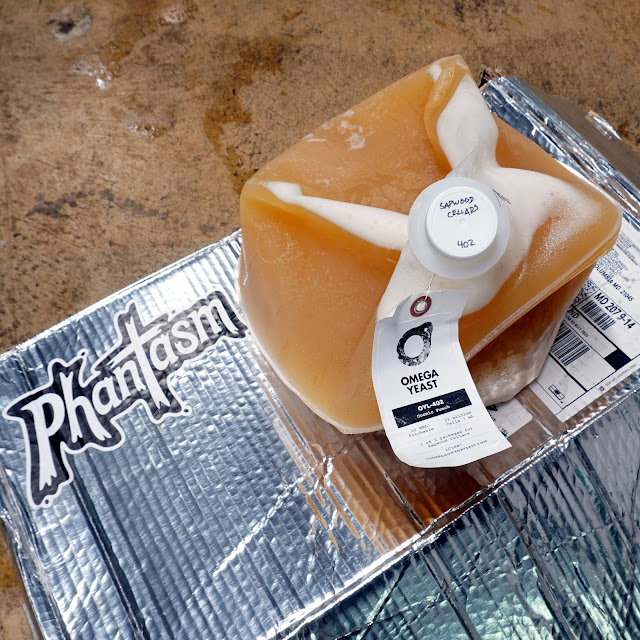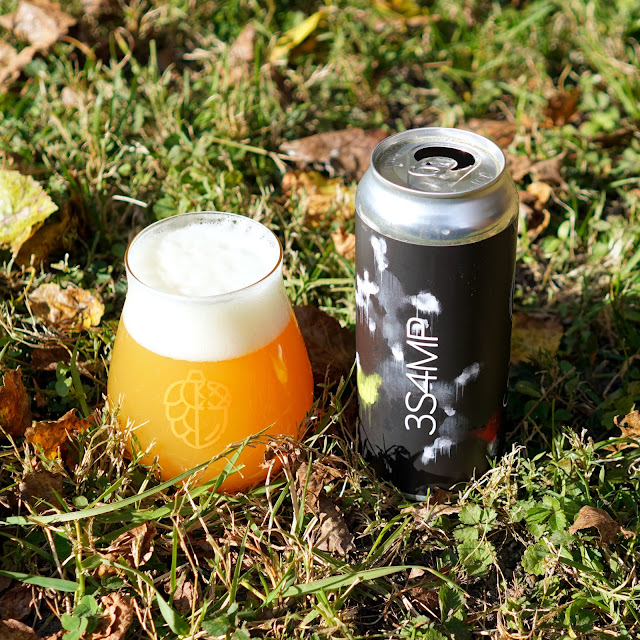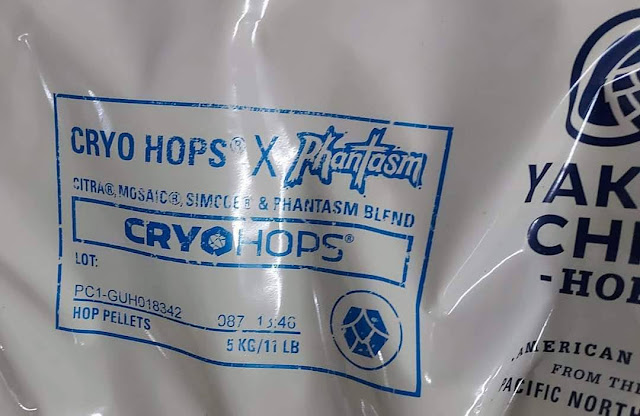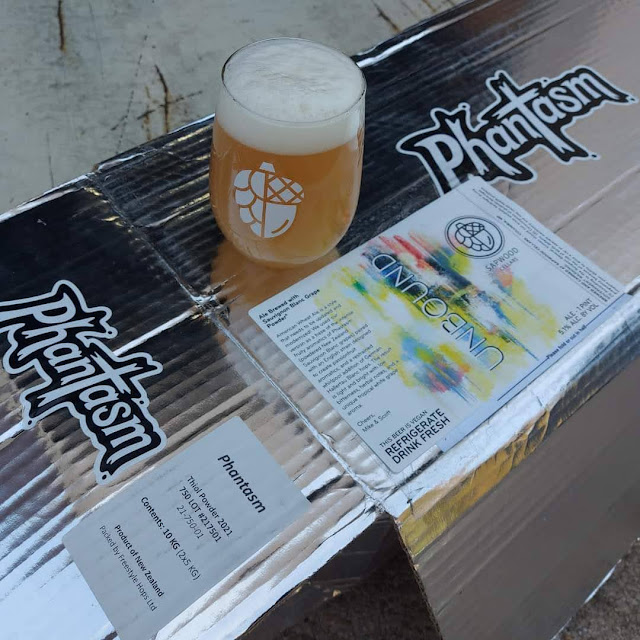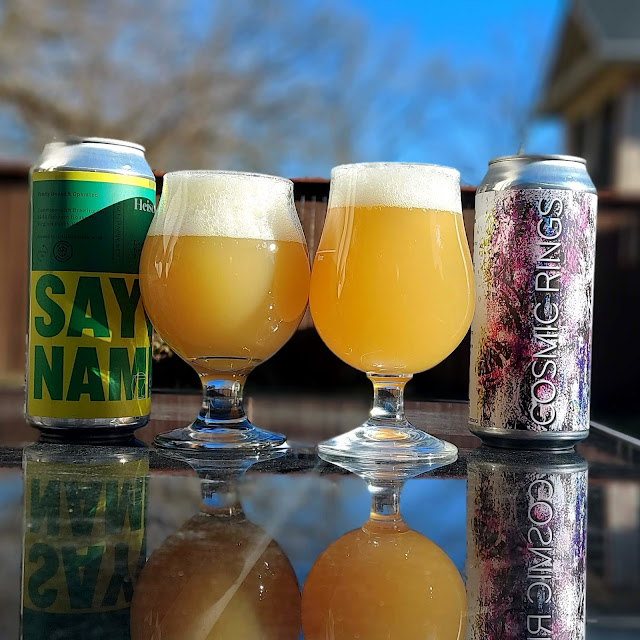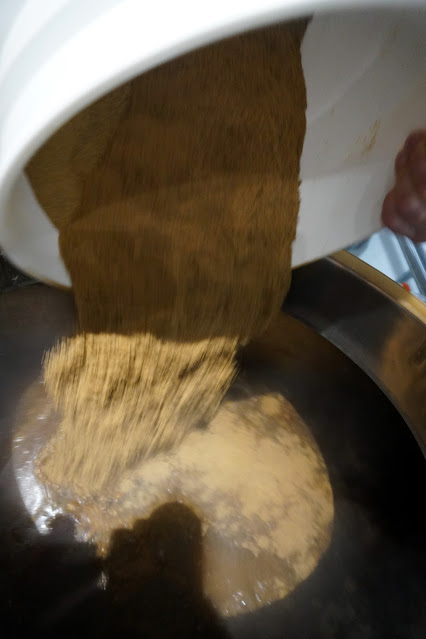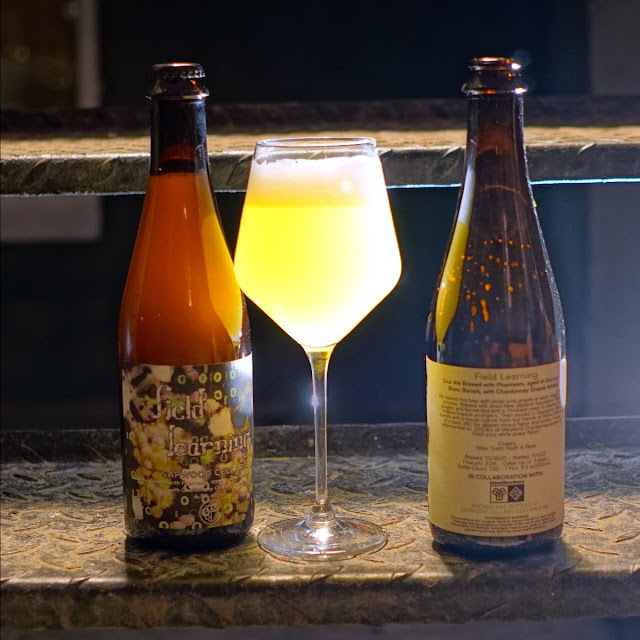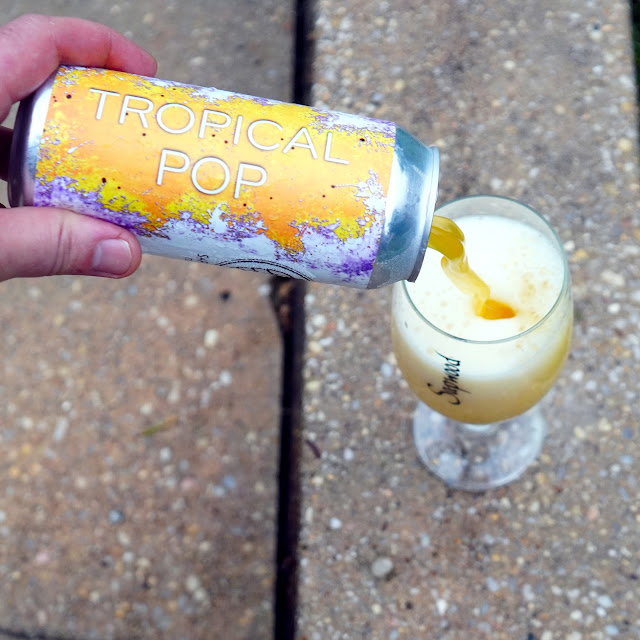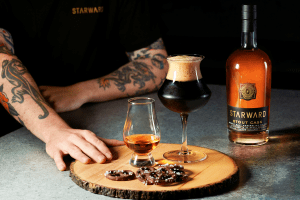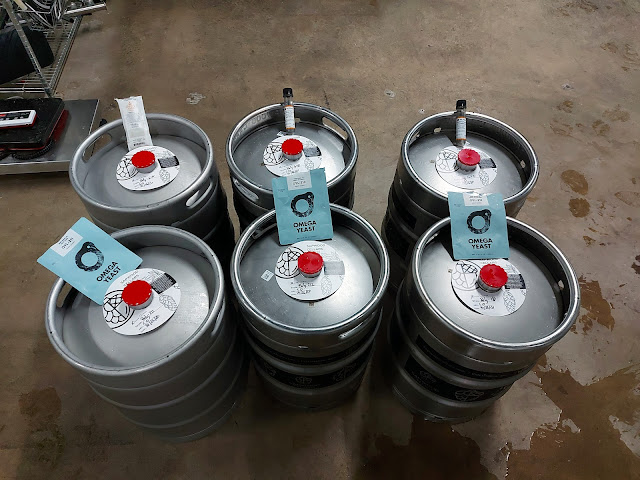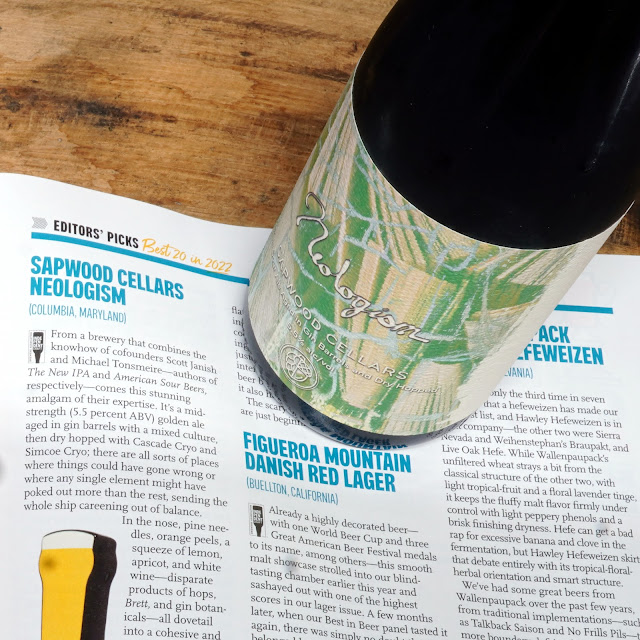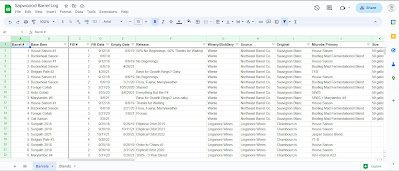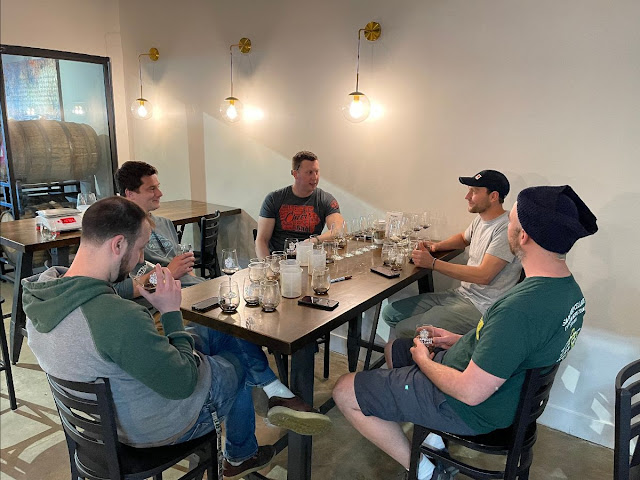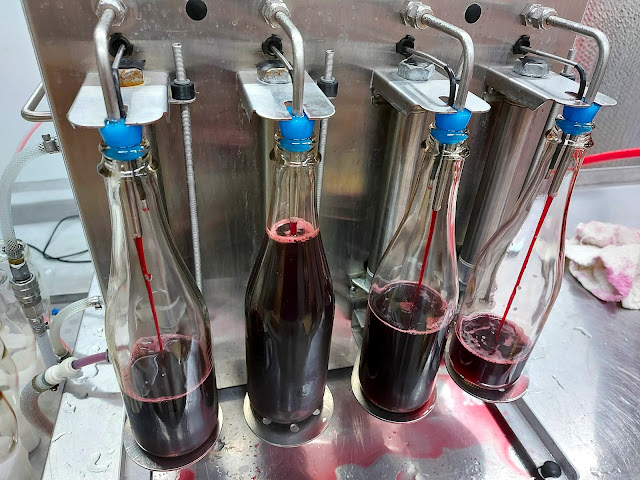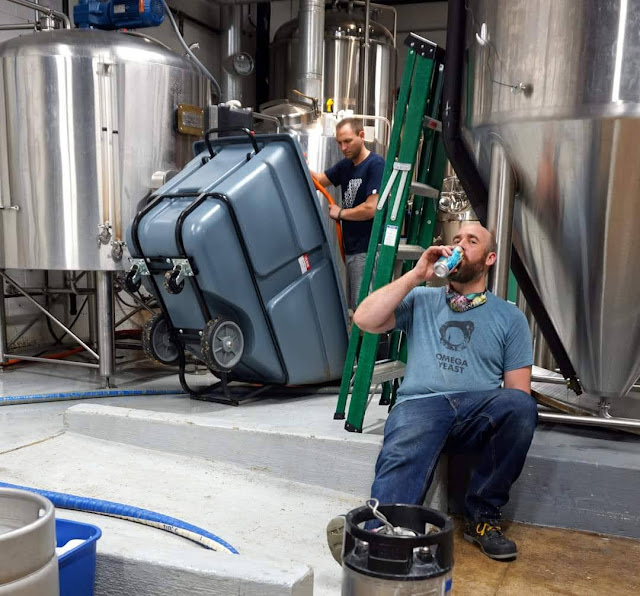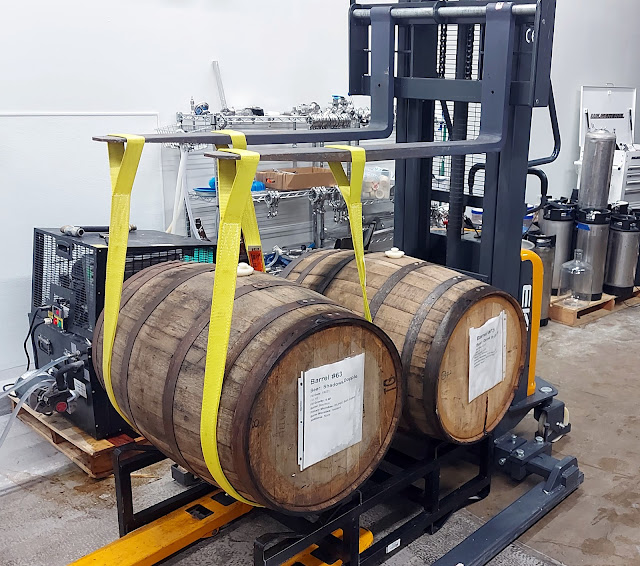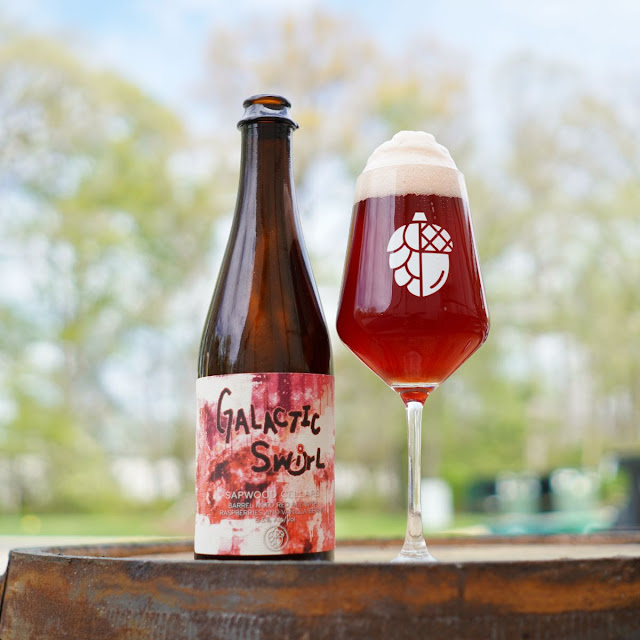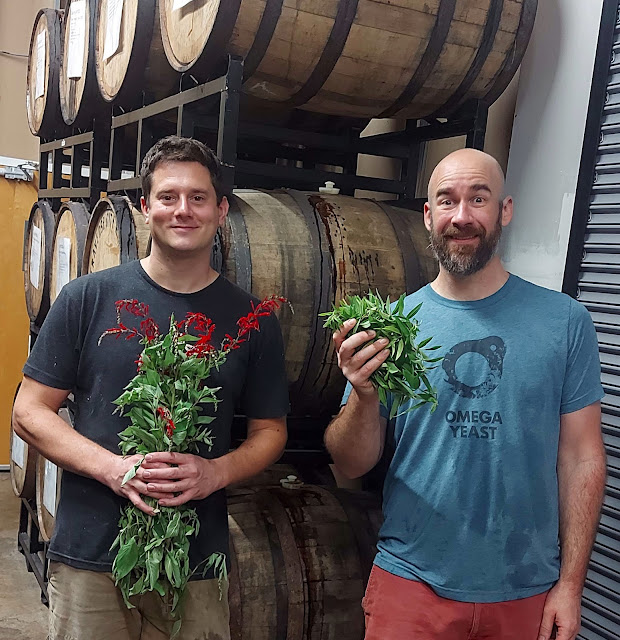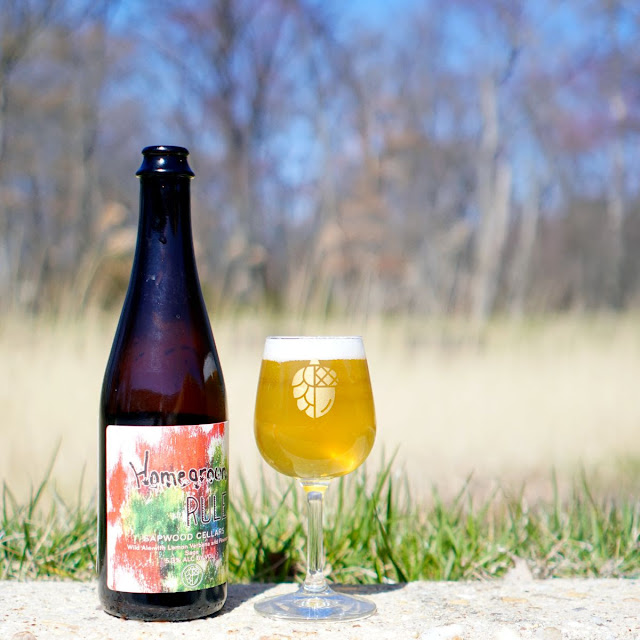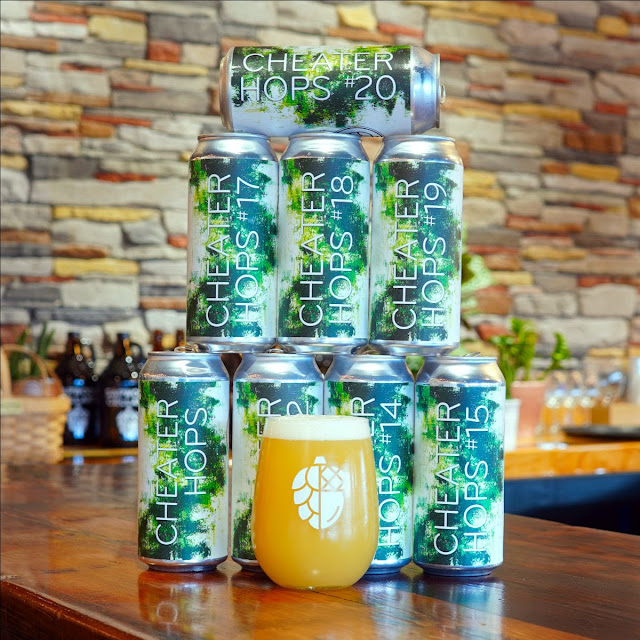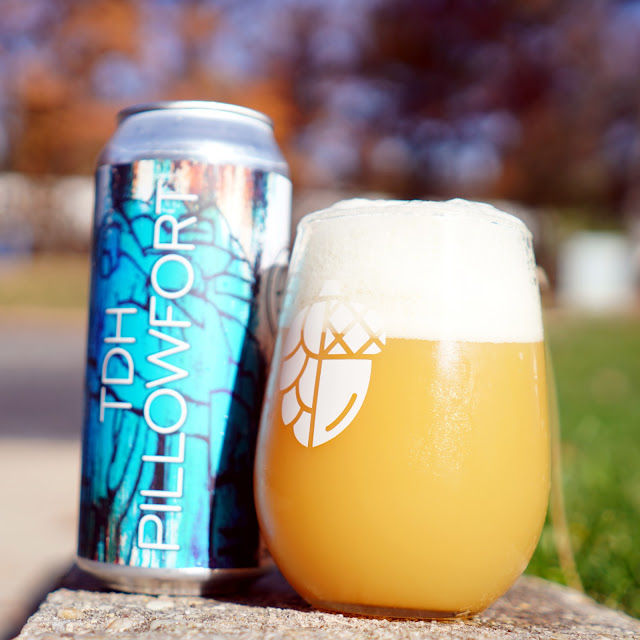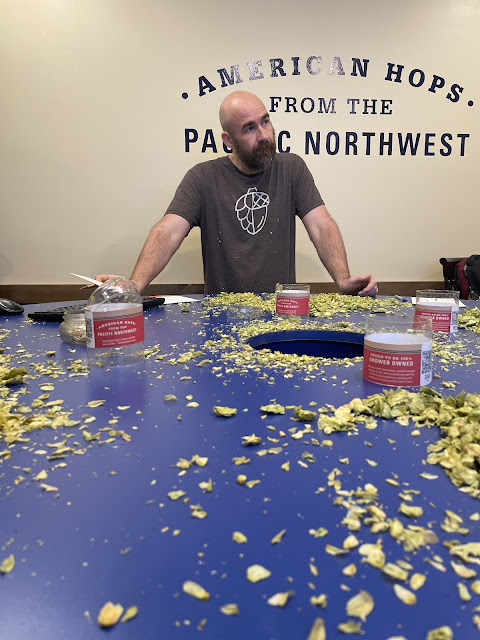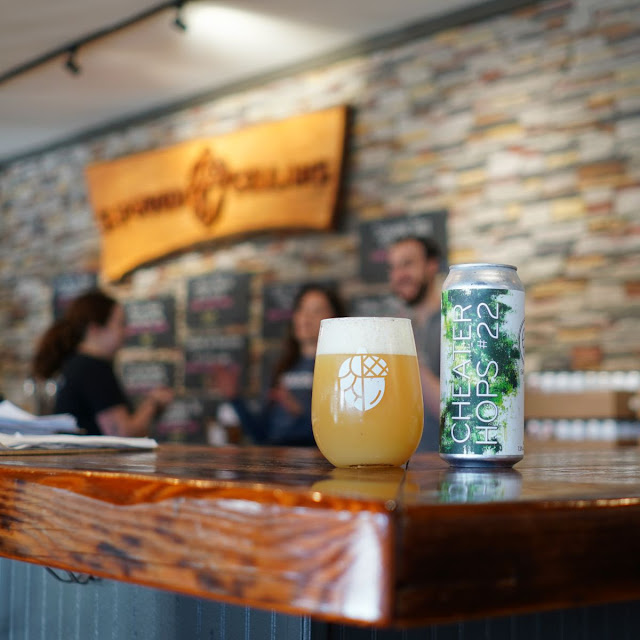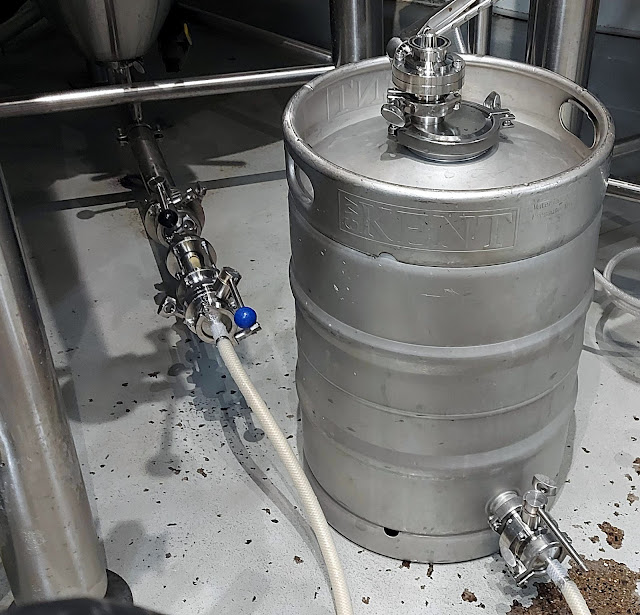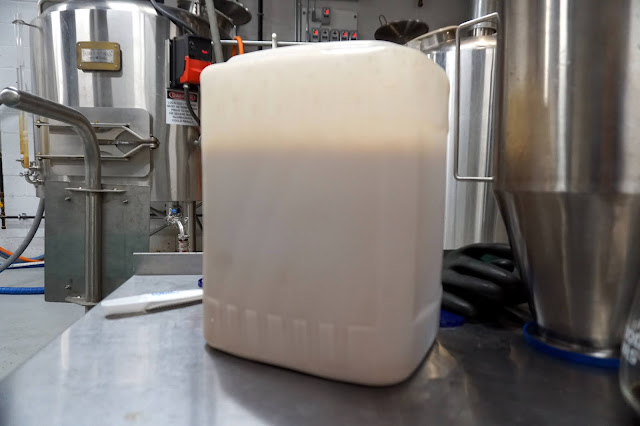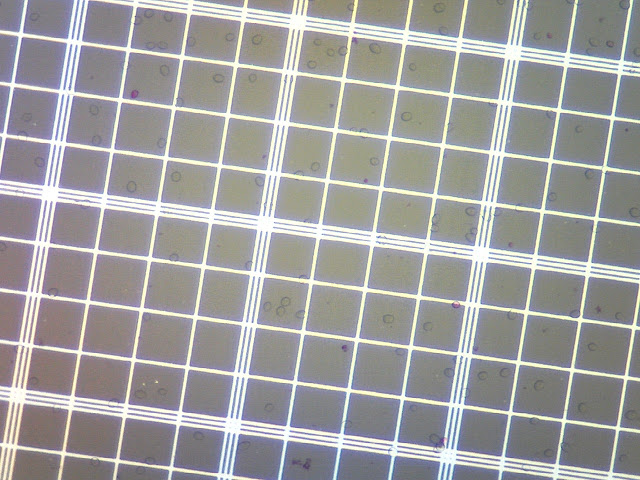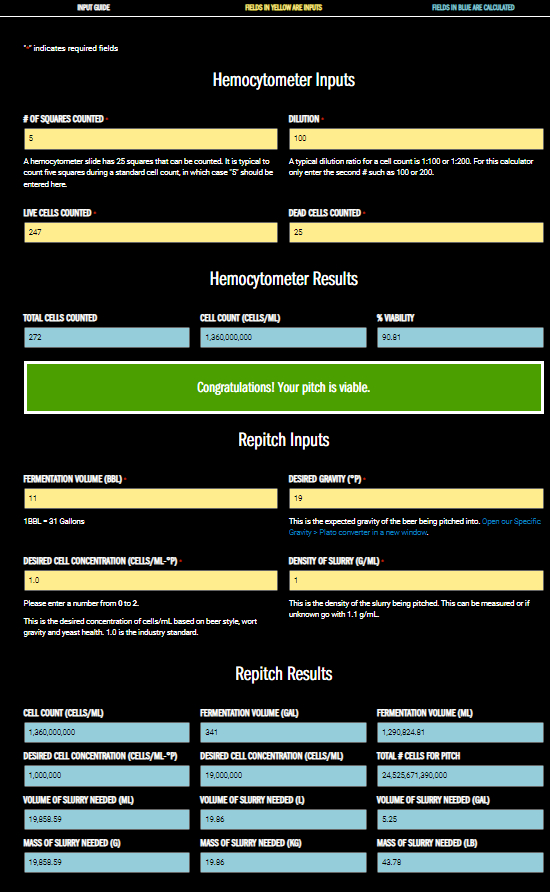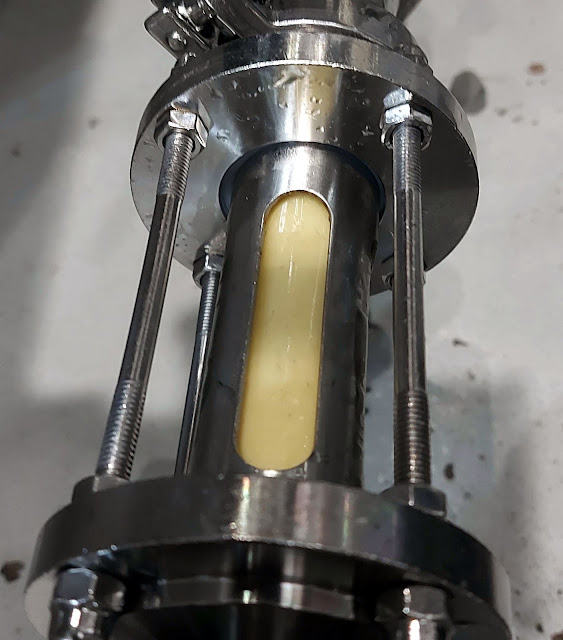So why all of the excitement from our fellow craft brewers? Obviously many of the collab requests are due to Scott's writing about and advocacy for thiols, but are they just something new that will be passé soon, or are these strains here to stay?
Thiols are sulfur-containing compounds that are often potent aromatics. The ones brewers are excited about are tropical, winey, and citrusy, while other thiols are intensely unpleasant with aromas of garlic or rotten eggs... which is why the thiol mercaptan is added to natural gas to alert people to leaks. The "skunky" aroma of light-struck beer is also 3-methyl-2-butene-1-thiol.
Unlike many other beer aromatics that require concentrations in the ppm (parts per million) or ppb (parts per billion) many thiols have an aroma threshold in the range of 5-70 ppt (parts per trillion). This means that it doesn't take much of them to be apparent, but also means that it doesn't require "high" concentrations to become dominant.
In terms of positive beer and wine aromatics, the thiols that get the most attention are 4MMP, 3MH, 3MHA, and 3S4MP. These have perceptions that range from passionfruit, to grapefruit, to rhubarb. These are the intense aromatics that give New Zealand Sauvignon Blanc wines their distinct aromas and are found free at low-levels in many New Zealand hops (as well as some other varieties from around the world).
Most of the thiols found in hops, malt, and other botanicals are bound and thus not active aromatically. Enzymes are required to free them. There are wine strains available capable of this, but getting those genes into brewer's yeast requires more work.
Bound thiols are found in both malt and hops, but levels vary widely. The bond in need of breaking comes in two "flavors" Cysteinylated (Cys) and Glutathionylated (Glu). The vast majority (90%+) in both malt and hops is Glu. The IRC7 gene in certain wine strains and Omega's Cosmic Punch can only work on the less common Cys. As a result, mash hops are most potentially beneficial for Cosmic Punch, as the enzymes in the mash (especially in the acid-protein rest temperature range) can help convert Glu to Cys. Luckily some less expensive hop varieties have the highest levels of bound thiols. We've used Saaz, Cascade, and Calypso with good results.
The more intense strains like Berkeley Yeast Tropics line and Omega's Helio Gazer, Star Party, and Lunar Crush can simply be added to a standard recipe with or without whirlpool hops. Rather than having more copies of the IRC7 gene, they have a wholly different gene which can free Glu-thiols directly. The IRC7 gene in Cosmic Punch is "sourced" from yeast, while patB Omega uses in the more assertive strains is from a bacteria (if transgenic CRISPR/Cas9 gene modification is a step too far for you). We fermented a kettle sour which only had a small dose of hexalone (isomerized hop extract for head retention) with London Tropics. The result was intensely passion-fruity, so much so that it could almost pass a fruit beer.
GM (genetically modified) yeast strains aren't allowed in commercial beers in many countries (e.g., Canada, New Zealand). As a result there are labs working with wild isolates capable of freeing thiols for co-fermentations (e.g., CHR Hansen - it is primarily marketed for NA beers) and breeding strains with heightened thiol freeing capabilities (e.g., Escarpment). Omega initially worked on yeast breeding between English ale and a wine strain capable of freeing thiols... our trials with it (Designer Baby) were interesting, but had too much of the wine strain's idiosyncrasies present (poor flocculation especially).
Pros:
-Intense aromatics that are otherwise impossible to achieve from hops, malt, and yeast
-Thiols have incredibly low aroma thresholds... measured in ppt (parts per trillion)
-Thiols are "free" no expensive hops or fruit required
-Thiols may help increase shelf-life by scavenging oxygen
Cons:
-Higher perceived "sulfur" aromatics are frequent in thiol-freeing strains
-Some brewers/consumers/countries prefer to avoid GM ingredients
-Thiols can be "one note"... is it really that different from adding a jar of passion fruit extract?
-Repitching the yeast doesn't make as much sense if you also want to brew English Ales, Porters/Stouts etc.
Initially there was a focus on maximizing thiol concentration. This could include colder fermentation temperatures, mash hops, and engineering strains with more assertive genes. Like most aspects of brewing (or cooking) maximizing a single flavor compound doesn't usually result in the best overall flavor or balance.
Thiols aren't typically a "primary" aromatic in beer, so a beer with over-the-top thiol concentration without anything to play off of can taste artificial. On the other hand, some of our heavily dry hopped DIPAs have tested at over 100X the flavor threshold for 3MH and still weren't the primary aroma thanks to competition from the "traditional" hop aromatics. From those test, I wouldn't worry about dry hopping removing all of the thiols.
As a general rule, I'd suggest using a more restrained approach to thiols in lighter/cleaner/simpler beers. It doesn't take much to add a unique twist to a lager or American wheat, where a double-dry-hopped DIPA or fruit beer may benefit from a much higher amount. In the end it's about your palate and goals for a beer.
In my experience expressing thiols doesn't make every hoppy beer better. They add a distinct note that can greatly enhance the perception of passionfruit-type aromatics. That is a wonderful contribution when you are leaning into those flavors, but can be distracting or muddle other flavors. For example, I love the "mango popsicle" aroma of great Simcoe. However, with one of the intense strains like London Tropics or Helio Gazer in an all-Simcoe beer can become more generically "tropical" rather than varietal "mango." On the other hand, when dry hopping with passion-fruity Galaxy, or brewing with actual passionfruit the thiol note helps to enhance the existing aromatics.
Hand-in-hand with thiol-expressing yeast goes Phantasm. It is essentially the dried and powdered remnants of the highest-thiol New Zealand Sauvignon Blanc grapes. As a result it comes with a high price-tag of ~$35/lb. It really doesn't smell like much before fermentation. Added to the whirlpool it adds a huge amount of bound thiols for the yeast to work on.
During fermentation I detect a distinct "white grape" flavor and aroma that I don't get from other thiol-expressing ferments that rely on grain and hops alone for bound precursors. A lot of this drops out with the yeast however and the finished beers are rarely as distinct. To my palate the added expense is hard to justify in a highly-dry-hopped beer where the thiols are competing against other big aromatics. Unless you lean into those aromatics with a hop like Nelson Sauvin. I like Phantasm best when it is paired with actual white wine grapes, or in a simple base where it can star.
We haven't used Berkely Yeast's "Thiol Boost" additive yet... but I'm just not that excited about a 15X increase on the already intense London Tropics level of 3MH. I'd be interested in herbs or additives that could push other unique thiol aromatics that we aren't getting from grain/hops.
At Sapwood Cellars, we've brewed a few dozen batches between Cosmic Punch, London Tropics, Lunar Crush, and experimental isolates. I've enjoyed most of them, but a handful stand-out as beers I loved!
Cosmic Rings: Galaxy and Citra is one of our favorite combinations... but we have had a difficult time sourcing great Galaxy (that doesn't taste like honey roasted peanuts). This all-Citra double-dry-hopped pale ale starts with New Zealand Taiheke (Cascade) in the mash and kettle. It's one of our favorite whirlpool hops because it is low alpha acid and has a beautiful tropical aroma... not to mention a lower price compared to other New Zealand varieties like Nelson Sauvin and Riwaka. Then we ferment with Omega's Cosmic Punch which brings some tropical aromatics without becoming distracting or artificial. Finally we dry hop with Citra and Citra Cryo at a combined 3 lbs/bbl.
Tropical Pop: Kettle sour fermented with Berkeley Yeast London Tropics along with passion fruit and mango purees. Passion fruit is expensive, fermenting with London Tropics boosted the passion fruit aroma allowing us to use less without sacrificing the aroma intensity.
Field Learning: As a homebrewer I loved being able to dump a bottle of thiol-rich New Zealand Sauvignon Blanc into a keg of mixed-ferm saison. That wouldn't be legal commercially, but what we did for this collab with Bissell Brothers was to brew a restrained base with Hallertau Blanc in the mash and Phantasm in the whirlpool and age it in fresh Sauvignon Blanc barrels along with Bissell's house culture. After a year we added fresh Chardonnay grapes from Crow Vineyards here in Maryland. The tropical notes from the thiols survived barrel aging and gave the beer depth we wouldn't have gotten from grapes and barrel alone.
Are thiols a scam? No, but they also aren't an innovation that fundamentally changes what it takes to make a delicious beer. Consider a thiol-freeing yeast when additional passionfruit-type aromatics will enhance your beer. Don't worry about maximizing the thiols unless you they will be competing against other strong aromatics.
I suspect that this is just the lead in to even more exotic genetically modified yeast strains (we have a pitch of Berkeley's Sunburst Chico which is modified to express high levels of pineapple-y ethyl butyrate). If you can produce a flavor compound without the cost, environmental impact, variability of growing it I suspect the economic pressures will be too great! That said, making delicious beers isn't about maximizing one or two compounds (in the same way that vanilla flavoring is inexpensive, but doesn't fully replace the depth and complexity of real vanilla beans).
